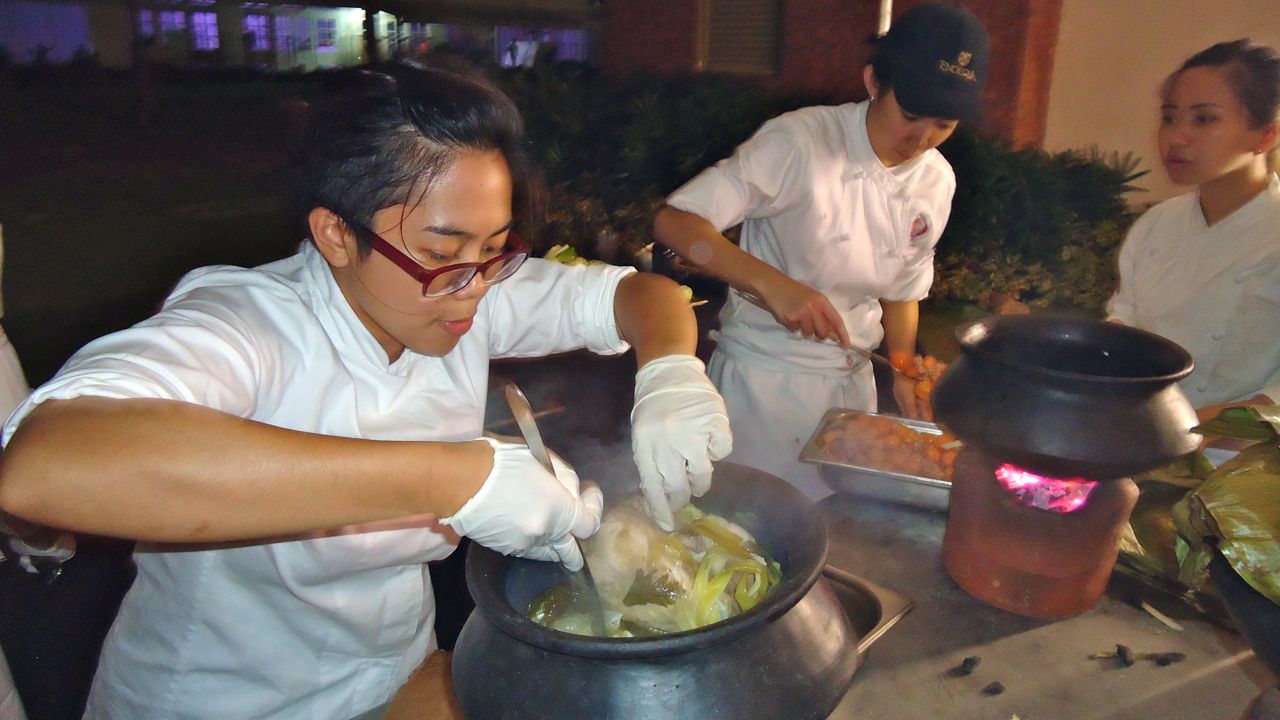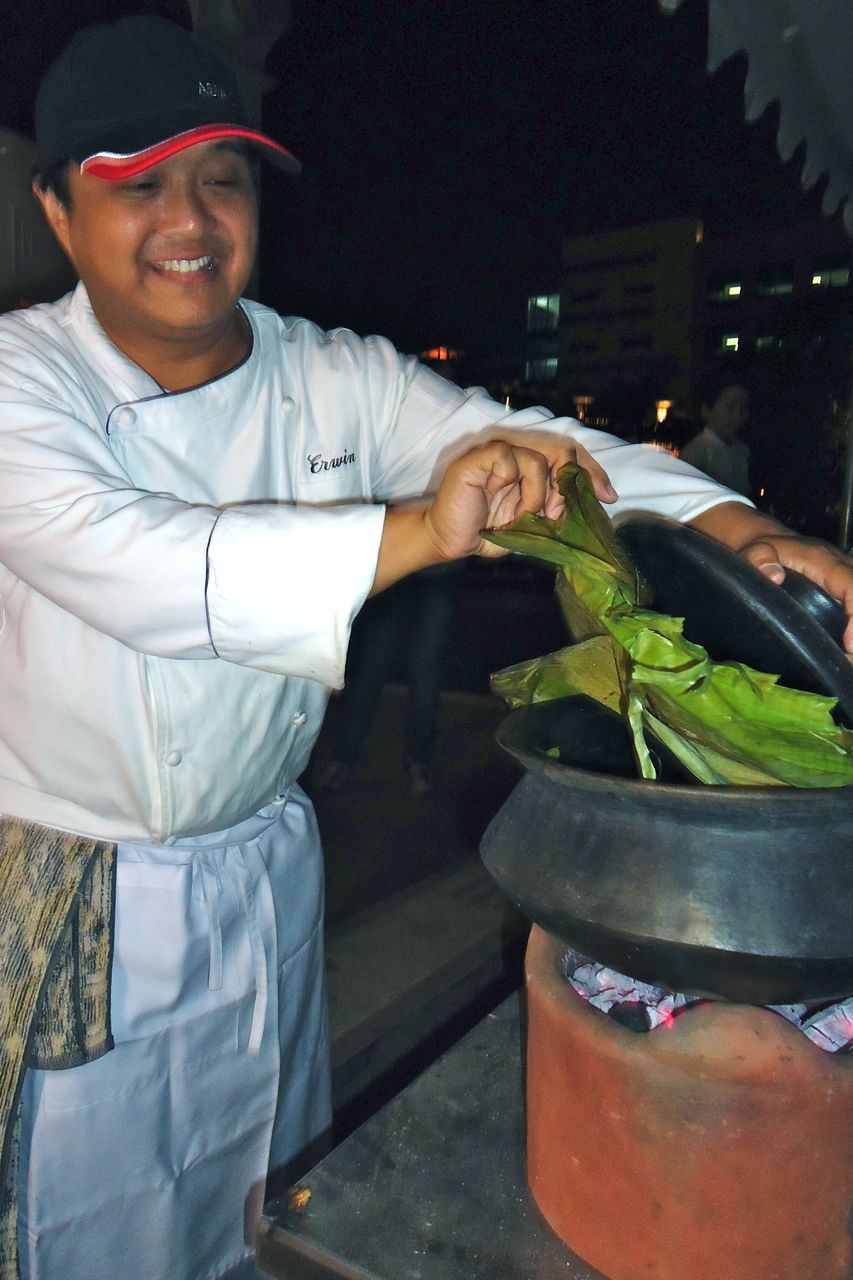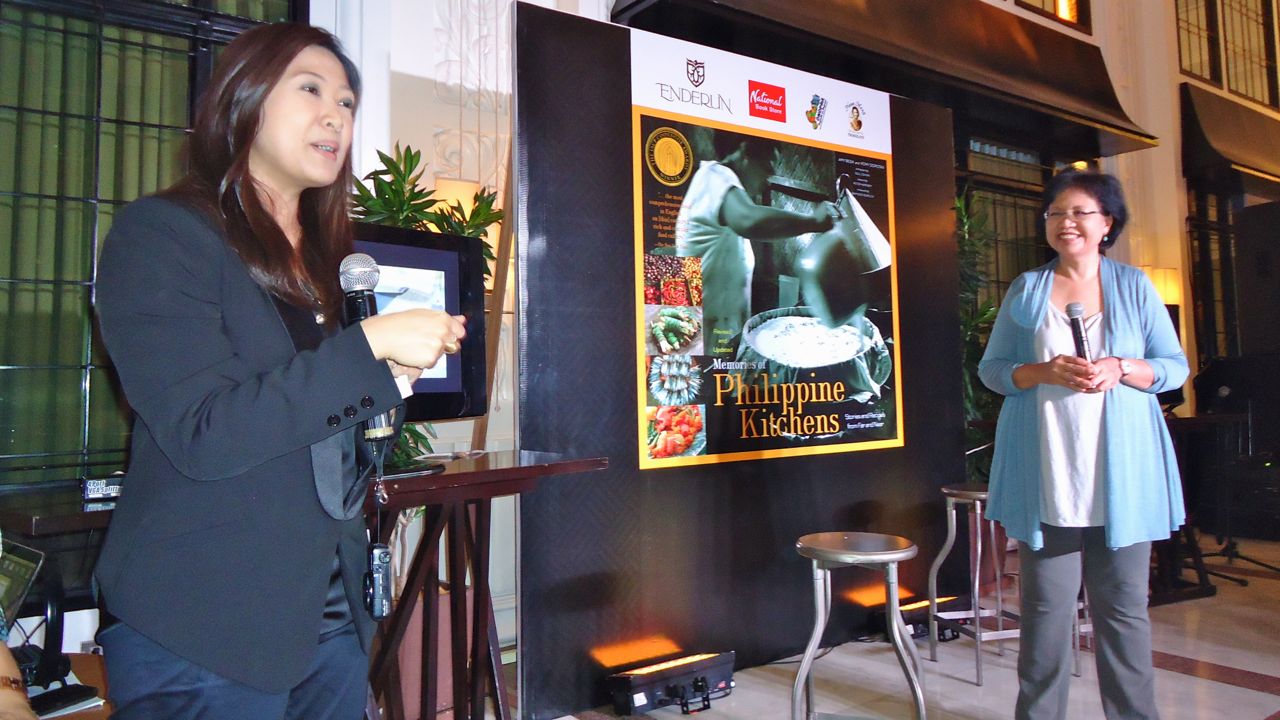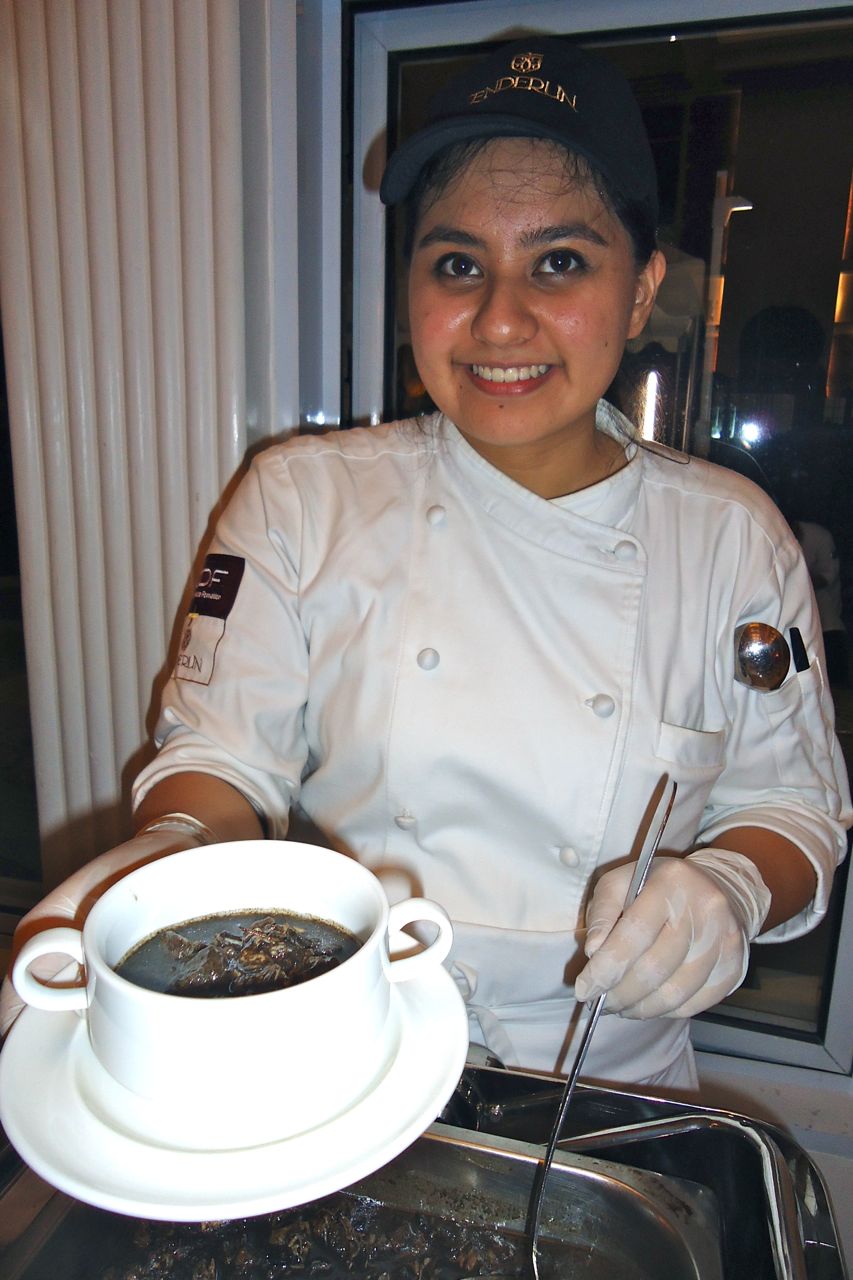SUMMARY
This is AI generated summarization, which may have errors. For context, always refer to the full article.

MANILA, Philippines – Much like the green puto served with dinuguan, young culinary arts students calling themselves the “Kawali Kings” may have seemed like unlikely partners to Amy Besa’s newly updated cookbook, Memories of Philippine Kitchens.
“They said, ‘We want to devote our lives to learning about Filipino food’,” Besa said of the Kawali Kings. “And to me, that’s the best result of anything you can do: to have the young generation want to do Filipino food.”
“We used to slaughter chickens in our garage — that’s how old we are,” Besa added, laughing.
The Kawali Kings

Enderun Colleges professor Erwin Lizarondo started The Kawali Kings 3 summers ago.
“The objective wasn’t really to create a brand. It stemmed from the hobby of and the need to learn culinary techniques from the Philippines and, of course, to enjoy Filipino food,” he said.
Lizarondo expressed sadness that most culinary schools in the country focus on teaching French cooking techniques.
“We know all these French techniques, we all know about French dishes, but what do we actually know about our own dishes?
“Do we know how to make a good Adobo or what makes a Sinigang a Sinigang?” Lizarondo told Rappler.
The Kawali Kings, named after the traditional cooking pan, found out that there were still a lot of things they did not know about Philippine cuisine and the local ingredients available in different regions.
“I think it is important to learn French techniques but it is equally important not to ignore what Philippine cuisine is all about,” Lizarondo added.
For him, local dishes are among the healthiest in the world because Filipinos greatly depend on ingredients from farms and the sea.
Heirloom recipes

To cultivate the culture of passing on culinary techniques to the younger generation, Besa brought in two heirloom recipes from Bulacan to the second edition of her book.
Originally, Memories of Philippine Kitchens featured acclaimed dishes she served at her Brooklyn restaurant Purple Yam.
The flavorful dinuguan recipe came from the family of former TV news personality Margaux Salcedo. She recalled that she and her mother had a good laugh translating Filipino cooking techniques to English.
“The most challenging part was describing it, writing it down with my mom,” Salcedo said.
They took time describing how to clean pig’s ears and adapting “palengke” jargons like “pinagpatayan” that refers to the heart, lungs and pancreas of the pig.
A sidenote about dinuguan: Besa found out that it is the most requested dish when she travelled around the country to research for the book.
“They all said, ‘We make the best dinuguan. Do you want my recipe?’,” she recalled.
“At some point, I had about 20 dinuguan recipes and I said, ‘You know, I don’t want anymore’ (sic).”

Another dish the Kawali Kings prepared was “Lola Anday’s Chicken Kinulob,” a recipe passed on to Tricia Tensuan, Enderun Colleges vice-president for admissions and external relations.
“In our family, [this dish] was as common as Adobo so I was surprised that [a lot of] people haven’t tasted Chicken Kinulob,” Tensuan told Rappler.
Chicken Kinulob is native chicken stuffed with onions, pig’s stomach, ginger, cabbage and celery leaves. It comes with a very rich sauce — chicken liver mixed with patis (fish sauce) from Cavite called “Unang Piga.”
The original recipe, Tensuan said, called for chicken blood mixed with rice. “They make it into pancakes and put them in a palayok (clay pot).”
Besa encouraged the youth to rediscover dishes from their lolas.
“How do you develop your love for Filipino food? You have to start with the heirloom recipes.
“You have to go back to your heritage,” the author said. – Rappler.com
Add a comment
How does this make you feel?
There are no comments yet. Add your comment to start the conversation.